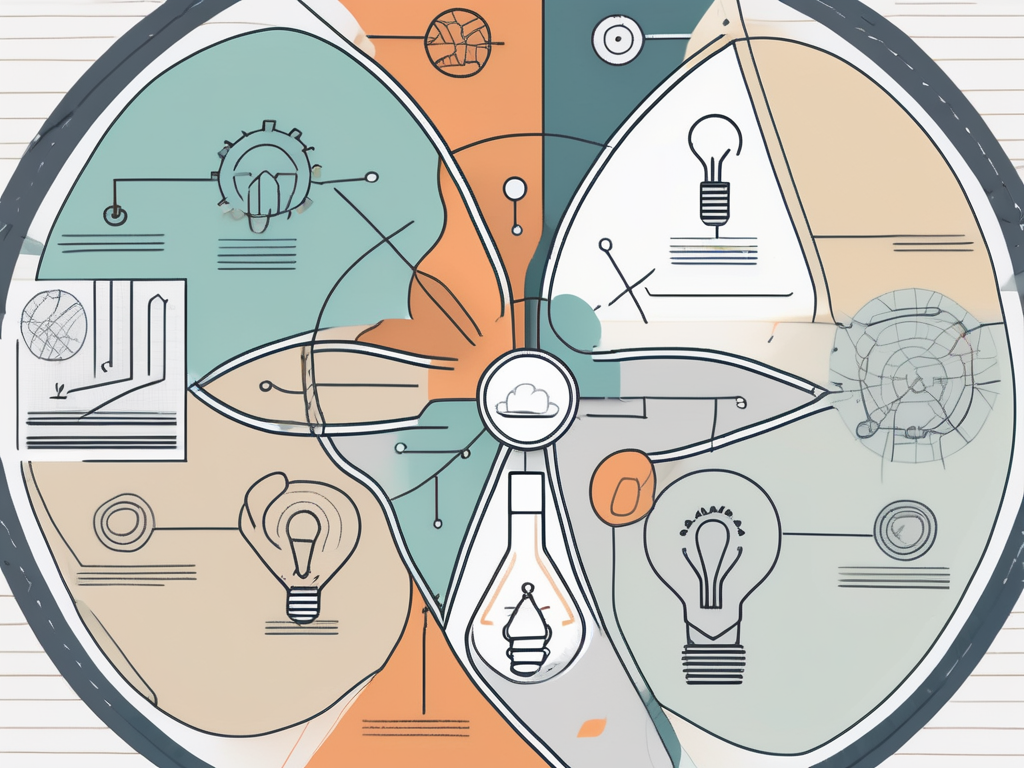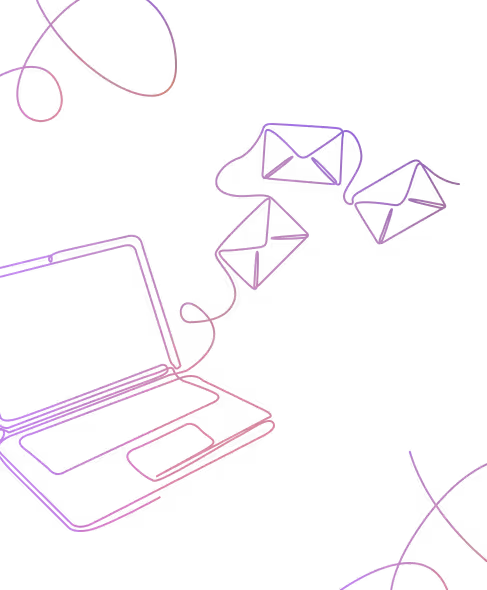Design thinking is a powerful methodology that helps individuals and teams tackle complex problems and come up with innovative solutions. Whether you're an entrepreneur looking to develop a new product or a marketing professional seeking to enhance a campaign, embracing design thinking can make a world of difference. In this article, we will demystify the five stages of the design thinking process and explore how they can be applied to various situations.
Demystifying Design Thinking
Before we dive into the nitty-gritty of the design thinking process, let's first understand why it is significant to embrace design thinking in the first place. Design thinking focuses on the needs and desires of users, encouraging empathy and a human-centered approach. By putting ourselves in the shoes of our target audience, we can gain valuable insights that lead to better solutions.
Design thinking also promotes collaboration and iteration. It encourages us to work in cross-functional teams, leveraging the diverse perspectives and expertise of individuals. Additionally, design thinking acknowledges that failure is a learning opportunity. It encourages rapid prototyping and testing, enabling us to refine our ideas and make improvements along the way.
One key aspect of design thinking is its emphasis on creativity and innovation. By fostering a culture that values out-of-the-box thinking, design thinking allows for the exploration of unconventional ideas that can lead to breakthrough solutions. This creative approach not only sparks inspiration but also drives continuous improvement and evolution in the design process.
Design thinking is not a linear process but rather a dynamic and iterative one. It involves multiple stages, including empathizing, defining the problem, ideating, prototyping, and testing. Each stage informs the next, creating a cyclical process that encourages constant refinement and enhancement of ideas. This iterative nature of design thinking ensures that solutions are continuously evolving to meet the changing needs and preferences of users.
https://magic.beehiiv.com/v1/1eae5826-7416-4d6c-acd3-a58b2964b78b?email={{email}}
The Five Key Stages of Design Thinking
Empathize
This phase involves understanding the needs, experiences, and motivations of the people you are designing for. It requires immersing yourself in the users' environment, observing, and engaging with them to gain deep insights into their lives and challenges. The goal is to develop a comprehensive understanding of the users' perspectives and emotions to inform the subsequent stages of the design process. Key activities in this phase include:
- Observation: Watching how users interact with their environment and identifying their pain points.
- Engagement: Conducting interviews and conversations to gather personal stories and experiences.
- Immersion: Experiencing the users' environment and context firsthand to understand their challenges deeply.
By empathizing with users, designers can uncover valuable insights that drive the creation of innovative and user-centered solutions.
Define
In this phase, the information gathered during the Empathize phase is analyzed and synthesized to define the core problem or challenge that needs to be addressed. The goal is to create a clear and actionable problem statement that guides the design process. Key activities in this phase include:
- Synthesizing Findings: Organizing and making sense of the data collected during the Empathize phase.
- Identifying Patterns: Looking for common themes, insights, and user needs.
- Creating a Problem Statement: Formulating a clear and concise problem statement, often framed as a "How Might We" (HMW) question. This statement should be human-centered, focusing on the user's needs and challenges.
The Define phase sets the direction for the subsequent phases by ensuring that the design efforts are targeted at addressing the right problem.
Ideation
Once you have a clear understanding of the problem, it's time to unleash your creativity and generate a wide range of ideas. The ideation stage is all about brainstorming, encouraging wild ideas, and thinking outside the box. It's important not to limit yourself during this stage and to embrace the diversity of perspectives within your team.
During ideation, it's helpful to use techniques such as mind mapping, storyboarding, and role-playing to stimulate new ideas and insights. The goal is to come up with as many potential solutions as possible, without evaluating them just yet. This stage is about quantity over quality.
For example, imagine a team of designers tasked with improving the user experience of a mobile banking app. The design team might engage in a brainstorming session where they generate ideas for new features, improved navigation, and personalized experiences. They might use mind maps to visually explore different possibilities and storyboards to envision how users would interact with the app. By embracing a diverse range of ideas, the team increases the chances of discovering innovative solutions that truly address user needs.
Prototype
With a plethora of ideas at hand, it's time to start turning them into tangible prototypes. Prototyping allows you to visualize and test your ideas in a low-cost and low-risk manner. It can range from simple sketches to more sophisticated models or even digital simulations.
The key here is to quickly and iteratively build prototypes that allow you to gather feedback from users. By involving users early in the design process, you can gain valuable insights and make informed refinements. Prototyping helps you validate assumptions and ensure that you’re heading in the right direction.
Continuing with the example of the mobile banking app, the design team might create paper prototypes to test different user flows and interactions. They could conduct usability tests with a small group of users, observing how they navigate through the app and gathering feedback on their experience. Based on this feedback, the team can refine their prototypes and make necessary adjustments before moving forward.
Test
Once you have your prototypes, it's time to put them to the test. Testing allows you to gather user feedback, evaluate the effectiveness of your solutions, and identify areas for improvement. This stage involves observing how users interact with your prototypes, conducting interviews, and collecting data.
Testing is a crucial step in the design thinking process as it helps you uncover potential flaws or unforeseen challenges. It also enables you to refine your solutions based on real user feedback, ensuring that they address the needs and desires of your target audience.
Returning to the mobile banking app example, the design team would conduct usability tests with a larger group of users, carefully observing their interactions and gathering qualitative and quantitative data. They might also conduct interviews to understand users' thoughts, emotions, and pain points. Based on the insights gained from testing, the team can make further refinements to their design, ensuring that the final product meets user expectations and delivers a seamless user experience.
The Steps Post Design Thinking Process
Bringing Ideas to Life: The Implementation Phase
The design thinking process doesn't end with testing. Once you have arrived at a refined and validated solution, it's time to bring it to life. This involves designing detailed plans, developing prototypes, and creating a roadmap for implementation.
During the implementation phase, it's crucial to collaborate closely with stakeholders and ensure that everyone is aligned with the vision. This stage requires effective project management, communication, and coordination to turn ideas into reality.
Moreover, the implementation phase often involves overcoming various challenges that may arise during the execution of the solution. These challenges could range from technical hurdles in prototype development to organizational resistance to change. Addressing these challenges requires adaptability, problem-solving skills, and a willingness to iterate on the initial solution.
Assessing Success: The Importance of Evaluation
After implementing your solution, the journey doesn't stop there. It's essential to continuously evaluate the success of your design thinking efforts. This involves assessing whether the solution has achieved the desired outcomes, measuring its impact, and gathering feedback from users and stakeholders.
Evaluation allows you to learn from your experiences and make improvements for future projects. It helps you refine your understanding of the problem space and refine your design thinking process. By embracing a continuous learning mindset, you can ensure that your solutions are always evolving and staying relevant.
Furthermore, evaluation provides an opportunity to celebrate successes and acknowledge the hard work of the team involved in the design thinking process. Recognizing and rewarding team members for their contributions can boost morale, foster a culture of innovation, and motivate individuals to continue engaging in creative problem-solving activities.
Wrapping Up the Design Thinking Journey
Design thinking is a powerful framework that empowers individuals and teams to tackle complex problems with creativity and empathy. By following the five stages – empathize, ideate, prototype, test, and implement – we can unlock innovative solutions and create meaningful impact.
Remember, design thinking is not a linear process. It's iterative and encourages flexibility. Each stage informs and influences the others, as you gain insights, refine your ideas, and iterate on your prototypes based on user feedback. So, embrace design thinking as a mindset and approach, and let your creativity and empathy guide you on your journey to problem-solving excellence.






